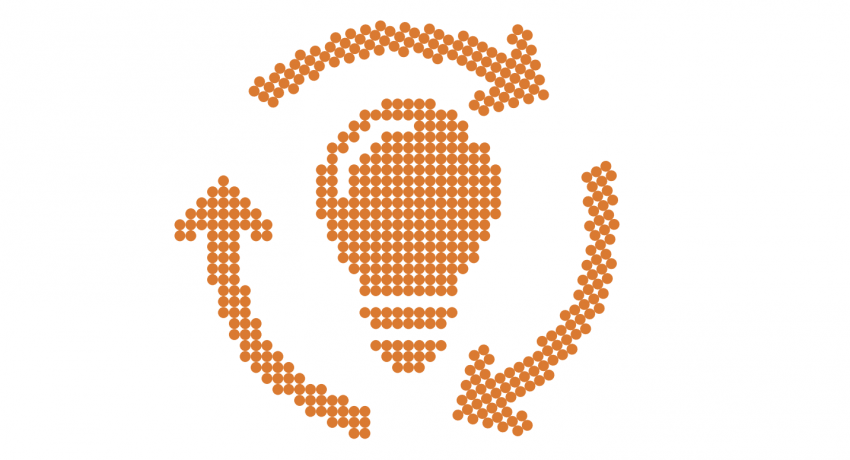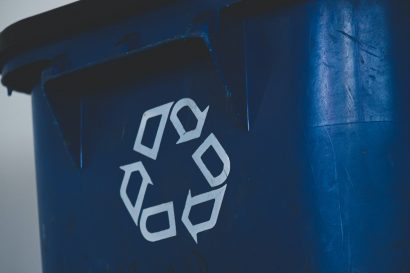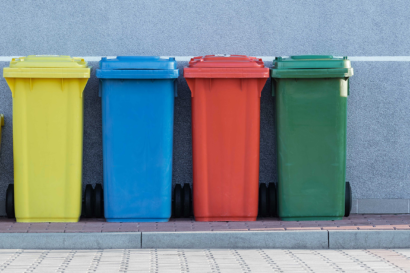AG INSIGHT | 14/06/2018
A resource efficient economy can have it all

Geanne van Arkel, Head of Sustainable Development at Interface, argues that a true circular economy is achievable but only if we look at resources holistically.
This blog is part of a blog series around the launch of the Aldersgate Group’s policy paper No Time to Waste: An Effective Resources and Waste Strategy.
A true circular economy is achievable but only if we look at resources holistically. By tackling big challenges rather than the granular detail, we can achieve a more widespread transformation. In driving resource efficiency to accelerate sustainable innovation and system change, it is crucial to consider:
Product design
Radical change requires circular product design, a shift to products that are modular, repairable and reusable made with the lowest carbon footprint. Products made with recycled or bio-based waste streams and renewable energy reduce their impact on the environment from the design and production phase and even throughout the usage phase when they can be used in several usage-cycles.
Radical product transparency
Charting products and services, sharing which materials are used and what the environmental impacts are is crucial in Environmental Product Declarations (EPDs). Product transparency, i.e. insight into the effect of products or services based on verified life-cycle analysis, stimulates the innovative strength of internal organization, leading to effective collaboration inside the chain and cross-sectoral cooperation. Using EPDs as a standard stimulates competition in sustainable innovation. The data from EPDs, and the LCAs that sit behind them, can be used to establish a metric to compare the performance of similar products Governments will have full knowledge of product impacts and can enact all kinds of policy instruments based on that information. Government procurement teams can support the growth of low carbon circular products by making fully informed decisions to buy the most sustainable products and services.
Learning from nature
Biomimicry Thinking is a holistic design approach that supports the development of industrial symbiosis, as already pioneered in the UK, Natural models, both in ecosystems and in mutualism, show that through cooperation it is possible to create abundant resources within partnerships, which can then be shared within the system.
At Interface we use carbon as a resource by storing carbon in our products. In doing this, we reflect how nature uses carbon and how our factories can contribute to a better outdoor climate just as our products contribute to a better indoor air climate. It is possible to go beyond building operations and address embodied carbon, not only through phasing out carbon emissions in building materials and construction but through becoming carbon positive.
The concept of Factories as a Forest challenges us further to run factories as a functioning ecosystem. Imagine what this would mean for our cities, when problems like air pollution, heat islands, biodiversity loss and water stress due to extreme weather events and climate change can be solved by green roofs and facades. These green cities would be able to absorb water, create habitats for pollinators, and cool themselves. They would have both better air quality and happier and healthier citizens, all at lower cost. The costs of one solution solving multiple problems will be less than trying to solve the separate issues independently.
Tax incentives
Create a tax incentive. Government could shift tax from labour to resources as proposed by Ex’tax, creating incentives to use recycled and bio-based waste streams. This would also make services more affordable and boost manpower, craftsmanship and creativity, enabling an inclusive, circular economy.
Governments need to shift the tax burden onto the product. This would not increase the overall rate of tax at national level; it would simply mean that everyone – businesses and people – pay different amounts of tax according to the way they behave. Using full product transparency in this way means that polluting products and services would be subject to higher taxation than those products that are less polluting, such as by way of a variable product tax. Full product transparency makes it possible to assess actual impacts on the environment, as expressed by metrics such as kg CO2 per functional unit.
Holistic approach
A resource efficient economy can have it all. Government can use resource efficiency as a driver by taking a systemic perspective. Interface has been working towards becoming a restorative coming by learning from nature through Mission Zero since 1994. Through it’s new mission Climate Take Back the company is bulding on the the results of decarbonizing it’s operations and products, working towards becoming regenerative by acting as nature. A low carbon, resource efficient circular economy is the prerequisite to accelerate and facilitate the transformation of our economy supportive of the realization of the SDGs, creating a climate fit for life.
About the author:
Geanne van Arkel is Head of Sustainable Development at Interface for Europe, Middle East and Africa. Since joining Interface 15 years ago Geanne has embedded sustainability practices across the business. Focused on full product transparency based on life cycle assessments, and the need for cross-sectoral cooperation to realise an inclusive low-carbon, circular and bio-based economy, Geanne has spearheaded the adoption of processes that have helped build a better business while contributing to a better world. She has a background in textile engineering and holds a Master degree in Biomimicry from the Arizona State University. Regularly she gives guest lectures at universities on how to integrate sustainability in a company’s strategy and how to embed sustainability in an organization.


